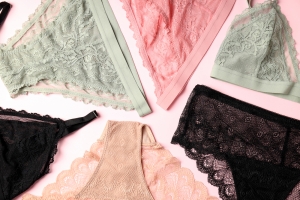When it comes to maintaining the performance of your kitchen knives, a good knife sharpener is essential. The right sharpener can make a significant difference in the ease of use and longevity of your knives. In this article, we will explore the various types of knife sharpeners available, their benefits, and how to choose the perfect one for your needs. Understanding the nuances of knife sharpening can elevate your culinary skills and enhance your overall cooking experience.
Understanding Knife Sharpeners
What is a Knife Sharpener?
A knife sharpener is a tool designed to hone the edge of a knife blade. Over time, knives can become dull due to regular use, and sharpening is necessary to restore their cutting ability. There are several types of sharpeners, each with its own method of sharpening and suitability for different types of knives. Understanding how each type works can help you select the best option for your kitchen. A sharp knife not only improves efficiency but also contributes to the quality of your food preparation, making it an essential tool for any home cook or professional chef.
Why is Knife Sharpening Important?
Keeping your knives sharp is crucial for several reasons. A sharp knife is safer to use because it requires less force to cut through food, reducing the risk of slips and accidents. Additionally, sharp knives make cooking more efficient, allowing for cleaner cuts and better presentation of food. Regular sharpening also extends the life of your knives, saving you money in the long run. Moreover, a well-maintained knife can enhance the flavors of your dishes, as it allows for precise cuts that preserve the integrity of the ingredients. Understanding the importance of knife sharpening can motivate you to incorporate it into your regular kitchen routine.
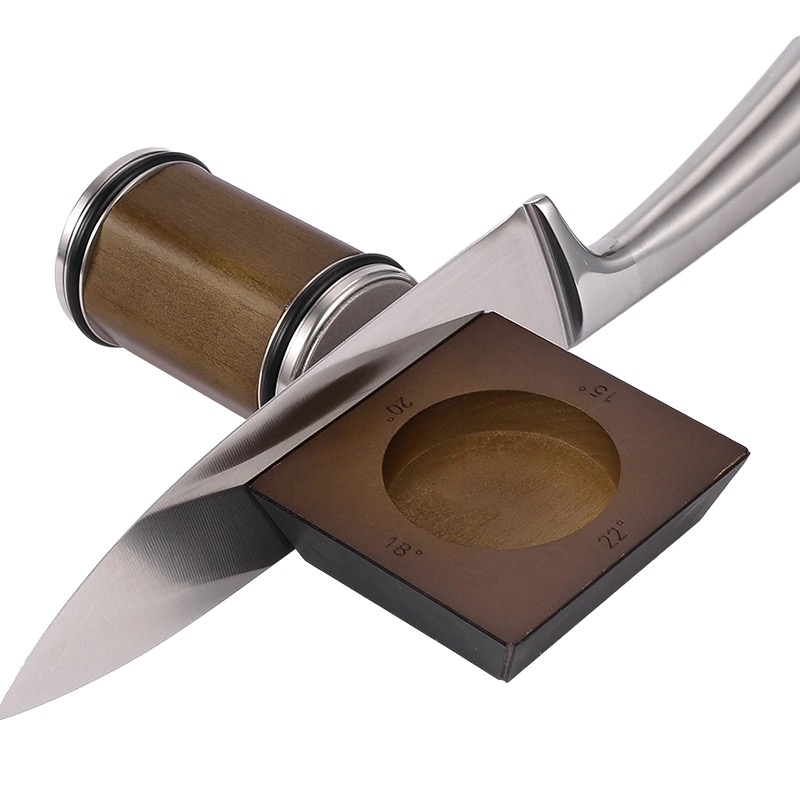
Types of Knife Sharpeners
Manual Sharpeners
Manual sharpeners are operated by hand and come in various forms, including:
Whetstones
Whetstones, or sharpening stones, are a traditional method of sharpening knives. They come in different grits, allowing for both coarse and fine sharpening. To use a whetstone, you wet the stone and then slide the knife blade across it at a specific angle. This method requires some skill but can produce a very sharp edge. The tactile experience of using a whetstone can be satisfying, as it allows you to feel the blade's progress and adjust your technique accordingly. Additionally, whetstones can be used for a variety of blades, making them a versatile choice for any kitchen.
Honing Rods
Honing rods, also known as sharpening steels, are used to realign the edge of a knife rather than remove material. They are typically made of steel or ceramic and are ideal for maintaining the sharpness of a knife between sharpenings. Using a honing rod is simple; you hold the rod vertically and swipe the knife blade against it at a 20-degree angle. This process helps to straighten the edge, which can become misaligned with regular use. Incorporating honing into your routine can significantly prolong the time between full sharpenings, ensuring your knives remain effective and safe.
Electric Sharpeners
Electric sharpeners are convenient and easy to use, making them a popular choice for home cooks. They typically have multiple slots with different grits for sharpening and honing. Simply insert the knife into the appropriate slot and let the machine do the work. Electric sharpeners are great for those who may not have the time or skill to use manual sharpeners effectively. They often provide consistent results and can sharpen a variety of knife types quickly. However, it is essential to choose a high-quality electric sharpener to avoid damaging your knives, as some lower-end models may not offer the precision needed for optimal sharpening.
Pull-Through Sharpeners
Pull-through sharpeners are compact devices that allow you to sharpen your knife by pulling it through a slot. They often have two or three stages for different levels of sharpening. While they are user-friendly, they may not provide the same level of sharpness as whetstones or electric sharpeners. These sharpeners are ideal for those who want a quick solution without the need for extensive technique or practice. However, it is important to note that they may not be suitable for high-quality knives, as they can sometimes remove too much material from the blade.
Specialty Sharpeners
Some sharpeners are designed for specific types of knives, such as serrated knives or scissors. These sharpeners often have unique features to accommodate the specific blade shape and cutting edge. For instance, serrated knife sharpeners typically have a tapered design that fits into the grooves of the blade, allowing for effective sharpening without damaging the serrations. Investing in specialty sharpeners can be beneficial if you frequently use specific types of knives, ensuring that all your tools remain in peak condition.
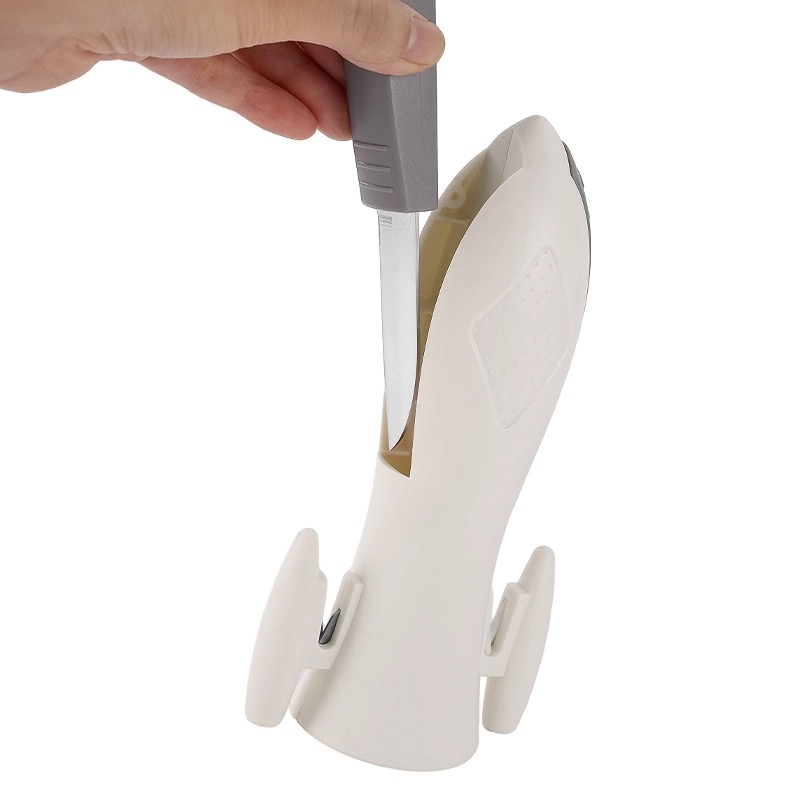
Choosing the Right Knife Sharpener
Consider Your Knife Types
When selecting a knife sharpener, consider the types of knives you own. If you have a variety of knives, including serrated and specialty blades, look for a sharpener that can handle all of them. Some sharpeners are versatile and can sharpen different types of blades, while others are more specialized. Understanding the specific needs of your knife collection can help you make an informed decision, ensuring that you invest in a sharpener that will serve you well for years to come.
Assess Your Skill Level
Your comfort level with sharpening tools should also influence your choice. If you are a beginner, an electric or pull-through sharpener may be the best option. For those with more experience, a whetstone can provide a superior edge but requires practice to master. Assessing your skill level can help you choose a sharpener that matches your abilities, allowing you to sharpen your knives effectively without frustration.
Evaluate Your Budget
Knife sharpeners come in a wide range of prices. Manual sharpeners are generally more affordable, while electric models can be more expensive. Determine your budget and choose a sharpener that fits within it while still meeting your needs. Remember that investing in a quality sharpener can save you money in the long run by prolonging the life of your knives. It is often worth spending a little more for a reliable product that will deliver consistent results.
Look for Quality and Durability
Investing in a high-quality sharpener can save you money in the long run. Look for sharpeners made from durable materials that can withstand regular use. Reading reviews and seeking recommendations can help you find a reliable product. A well-constructed sharpener will not only perform better but will also last longer, making it a worthwhile addition to your kitchen tools.
Benefits of Using a Knife Sharpener
Improved Cutting Performance
A sharp knife cuts through food more easily, making meal preparation faster and more enjoyable. Whether you are slicing vegetables or carving meat, a sharp knife enhances your cooking experience. The precision of a sharp blade allows for cleaner cuts, which can improve the presentation of your dishes and elevate your culinary creations. Additionally, a sharp knife can help maintain the freshness of ingredients, as it reduces bruising and damage during cutting.
Enhanced Safety
Dull knives can be dangerous as they require more force to cut, increasing the likelihood of slips and accidents. By keeping your knives sharp, you reduce the risk of injury in the kitchen. A sharp knife allows for better control and precision, making it easier to execute cuts safely. Understanding the safety benefits of knife sharpening can encourage you to prioritize this essential maintenance task.
Cost-Effectiveness
Regularly sharpening your knives can extend their lifespan, reducing the need for replacements. A good sharpener is a worthwhile investment that pays off over time. By maintaining your knives, you can avoid the expense of purchasing new ones and ensure that your existing tools remain effective. This cost-effectiveness is particularly important for professional chefs and avid home cooks who rely on their knives daily.
Versatility
Many knife sharpeners can handle various types of blades, making them versatile tools in your kitchen. This adaptability allows you to maintain all your knives with one device. A versatile sharpener can save you time and space, as you won't need to invest in multiple sharpeners for different types of knives. This convenience is especially beneficial for those with limited kitchen storage.
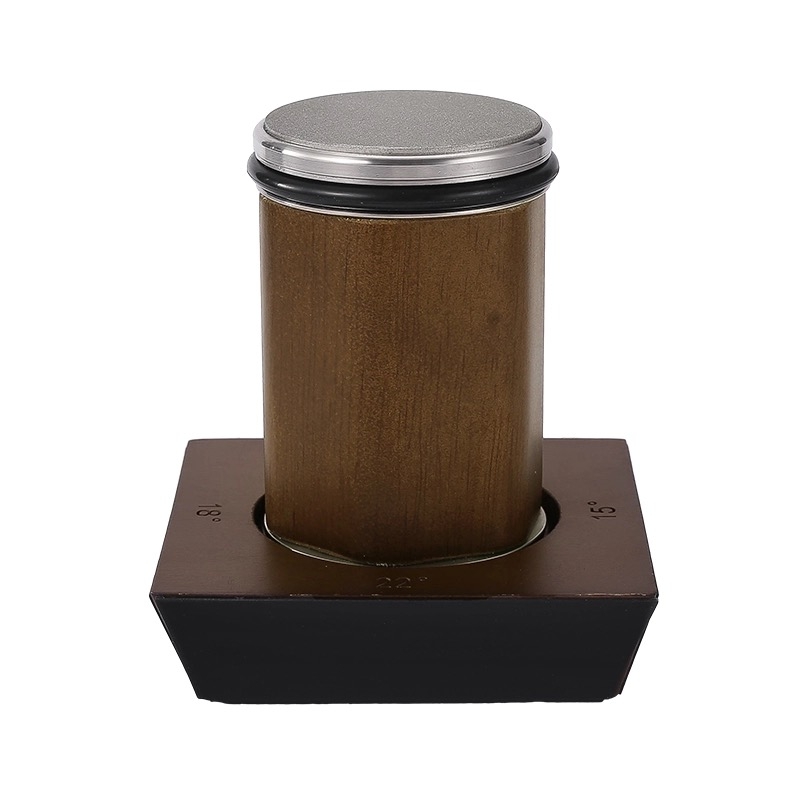
Maintenance and Care of Knife Sharpeners
Cleaning Your Sharpener
To ensure your knife sharpener remains effective, it is essential to clean it regularly. For manual sharpeners, wipe down the surfaces with a damp cloth to remove metal shavings and debris. Electric sharpeners may have removable parts that can be washed separately. Keeping your sharpener clean not only prolongs its life but also ensures that it performs optimally, providing the best results for your knives.
Storing Your Sharpener
Proper storage of your knife sharpener can prolong its life. Keep it in a dry place, away from moisture, and ensure it is not exposed to extreme temperatures. If you have a whetstone, store it flat to prevent damage. Proper storage practices can help maintain the integrity of your sharpener, ensuring that it remains effective whenever you need it.
Regular Use
To maintain the sharpness of your knives, incorporate regular sharpening into your kitchen routine. Depending on your usage, this could mean sharpening your knives every few weeks or after significant use. Establishing a routine for knife maintenance can help you stay organized and ensure that your knives are always ready for action. Regular use of your sharpener will also help you become more comfortable with the sharpening process, improving your skills over time.
Conclusion
Choosing the right knife sharpener is crucial for maintaining the performance and safety of your kitchen knives. By understanding the different types of sharpeners available and considering your specific needs, you can find the perfect tool to keep your blades in top condition. Whether you opt for a manual whetstone, an electric sharpener, or a pull-through model, regular sharpening will enhance your cooking experience and ensure your knives last for years to come. Embracing the art of knife sharpening can transform your culinary skills, making cooking not only more efficient but also more enjoyable.
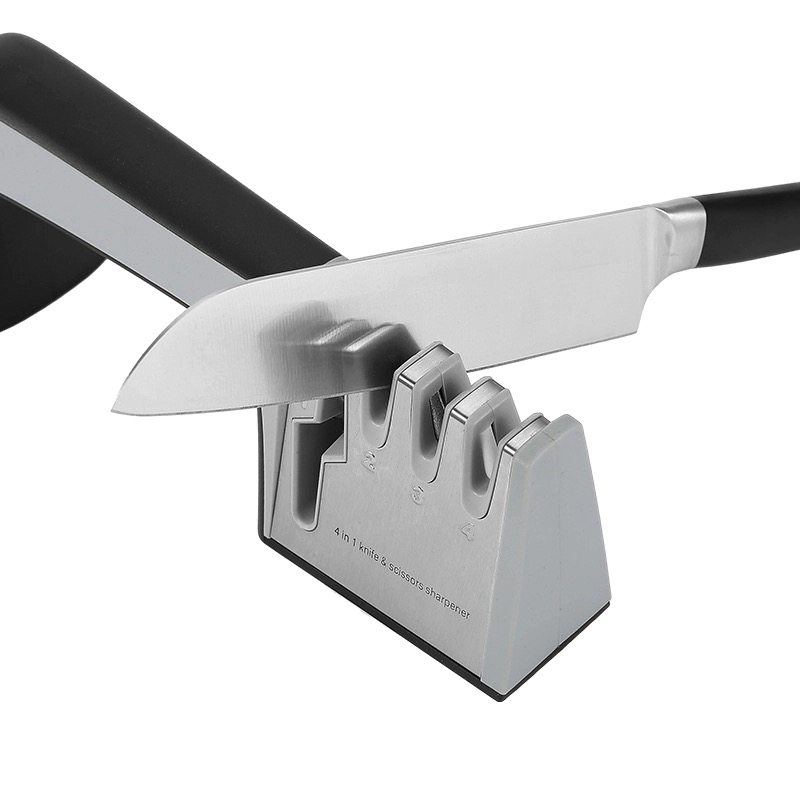
Frequently Asked Questions regarding Knife Sharpener
1. What is the best angle to sharpen a knife?
The best angle to sharpen a knife typically ranges from 15 to 20 degrees. A 15-degree angle is ideal for Asian-style knives, which are designed for precision cutting, while a 20-degree angle is more suitable for Western-style knives, which require a sturdier edge for tougher tasks.
2. How often should I sharpen my knives?
The frequency of sharpening depends on how often you use your knives. For home cooks who use their knives regularly, sharpening every few weeks is advisable. If you notice that your knife is struggling to cut through food, it's time to sharpen it, regardless of the time since the last sharpening.
3. Can I use a knife sharpener on serrated knives?
Yes, but you need a specialized sharpener designed for serrated blades. Regular sharpeners may not effectively sharpen the grooves of a serrated knife. Look for a sharpener with a tapered design that can fit into the serrations to maintain the knife's cutting ability.
4. Is it better to use a whetstone or an electric sharpener?
It depends on your skill level and preference. Whetstones offer more control and can produce a sharper edge, but they require practice to use effectively. Electric sharpeners are easier and faster, making them suitable for beginners or those who want convenience. Ultimately, the best choice depends on your comfort and the quality of sharpening you desire.
5. How do I maintain my knife sharpener?
To maintain your knife sharpener, clean it regularly to remove metal shavings and debris. For manual sharpeners, wipe them down with a damp cloth. Electric sharpeners may have removable parts that can be washed separately. Store your sharpener in a dry place to prevent moisture damage, and follow the manufacturer's instructions for care and maintenance to ensure longevity.




